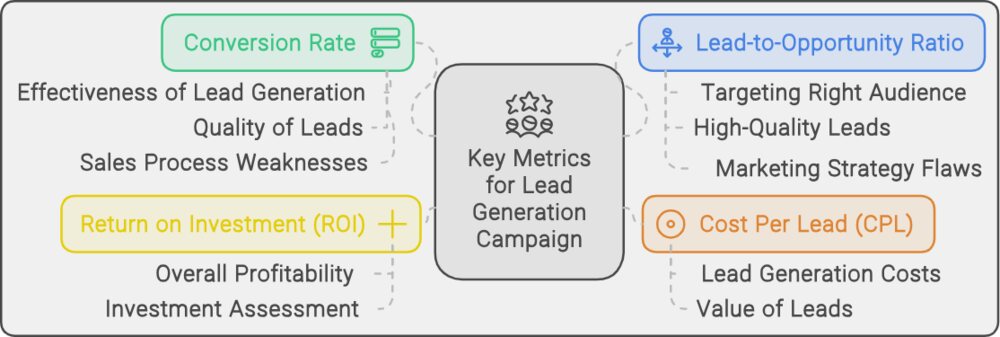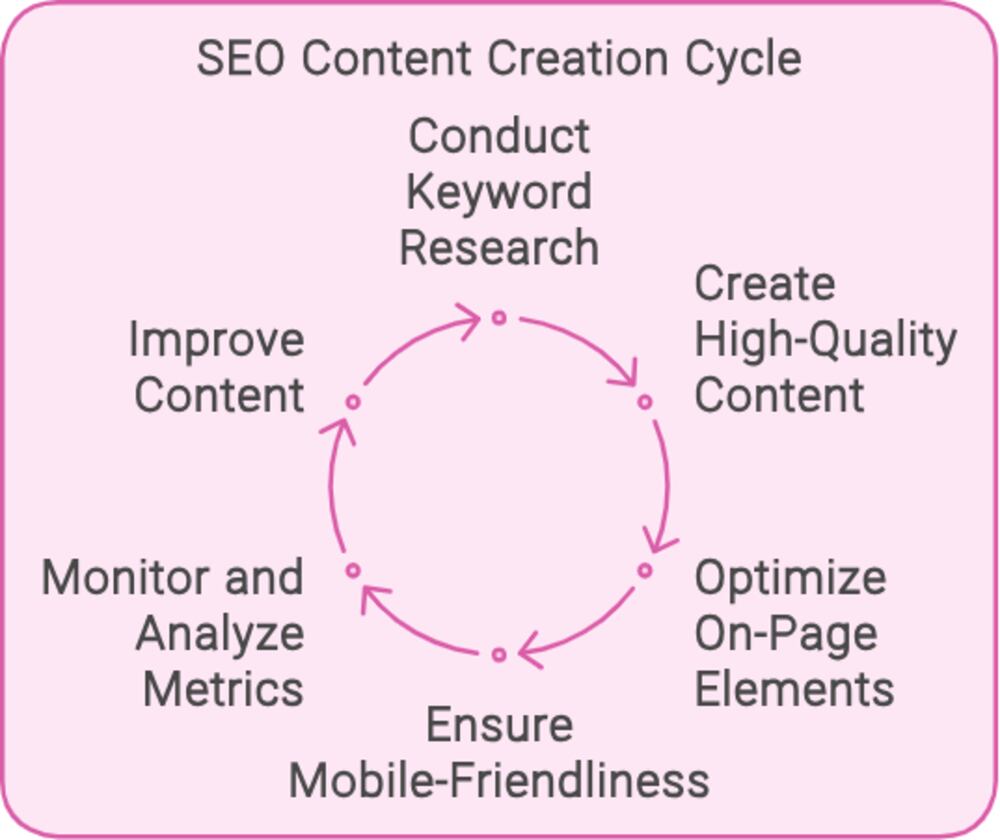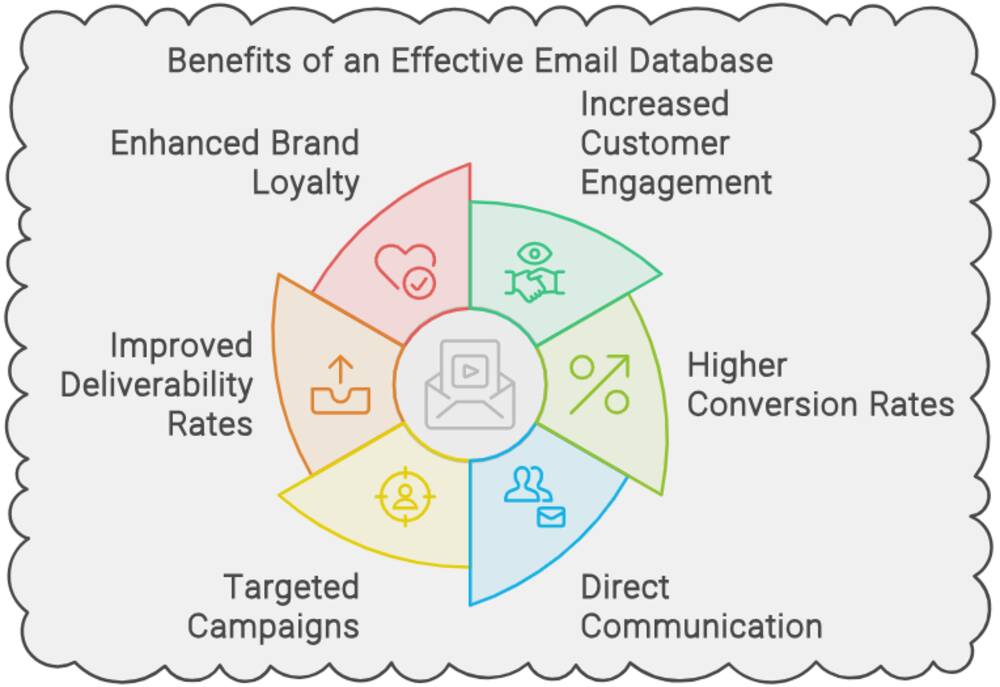Lead generation has become the holy grail for companies seeking success. In an ever-evolving marketplace, where competition is fierce and attention spans are fleeting, it becomes imperative to not only engage in lead generation but also measure its success.
Outsourced lead generation campaigns – a revolutionary approach that promises to alleviate the burden of generating leads internally. However, not all outsourced lead generation efforts are created equal. While some may deliver exceptional results, others can turn into costly mistakes that drain resources and deliver lackluster returns.
So why is it crucial to measure the success of your outsourced lead generation campaign?
As a business owner or marketing professional, you need to know if your investment in outsourcing is yielding the desired results. Merely relying on promises and vague assurances from external service providers is akin to gambling with your company’s future.
Setting clear lead-generation goals is an essential first step toward a successful campaign. Without well-defined objectives, how can you possibly gauge whether your efforts have been fruitful or futile?
By outlining specific targets such as increasing qualified leads by 30% within six months or boosting conversion rates by 20%, you provide yourself with a measurable benchmark against which progress can be assessed. But it doesn’t stop there, metrics play a pivotal role in determining success as well. There’s no room for vague notions like “we’re doing well” or “our team feels confident.”
To truly analyze the impact of an outsourced campaign, you must dive deep into data-driven metrics that shed light on various aspects of lead generation performance – from click-through rates and email open rates to customer acquisition costs and revenue generated per lead. The analysis phase is where many companies stumble, often neglecting valuable insights buried within their data troves.
It’s not enough to glance at a few charts and pat yourself on the back. A rigorous examination of trends, patterns, and correlations is necessary to uncover hidden opportunities or identify potential pitfalls.
By scrutinizing the data through your lead generation goals lens, you can pinpoint areas that require attention and make informed adjustments. Measuring the success of your outsourced lead generation campaign is not a luxury, it is an absolute necessity.
To thrive in an unforgiving marketplace, you must hold your external service providers accountable by establishing clear goals, analyzing data-driven metrics with precision, and making calculated adjustments based on sound analysis.
Continuous improvement should be the mantra guiding every decision you make, as it paves the way for a bright future in lead generation measurement – where success is not just measured but achieved with unwavering dedication.
What is lead generation?
Lead generation is the art of capturing potential customers’ interest in your products or services. Without a constant stream of fresh leads, a company’s sales funnel dries up, leaving it gasping for survival in an unforgiving market.
Lead generation is not a mere numbers game. It’s not about mindlessly collecting as many random names and email addresses as possible.
No! True success lies in attracting qualified leads who have a genuine interest in what you have to offer.
Outsourcing lead generation has become increasingly popular. Companies are expanding their horizons by entrusting specialized agencies to take charge of this crucial task. And why shouldn’t they? Outsourcing lead generation allows for a greater focus on core business functions while experts handle the intricate dance of attracting and nurturing potential customers.
But here’s where things get interesting – measuring the success of your outsourced lead generation campaign becomes paramount. After all, if you don’t know how well your efforts are translating into tangible results, how can you make necessary adjustments for continuous improvement?
This is where metrics come into play: those magical data points that provide insights into whether your campaign is hitting those coveted lead-generation goals. To truly grasp your campaign’s effectiveness, one must delve deep into the labyrinthine world of analysis.
Analyzing data allows you to dissect each aspect of your campaign with surgical precision – from click-through rates and conversion rates to customer acquisition costs and lifetime value. Only by meticulously examining these metrics can you unearth the hidden gems of knowledge that will drive your lead generation strategy forward.

What is outsourced lead generation?
Outsourced lead generation refers to the practice of hiring specialized firms or agencies to handle the task of generating leads on behalf of your business. These external partners deploy various strategies such as content marketing, email campaigns, social media advertising, and cold calling to identify potential customers who have expressed interest in your product or service. The goal is to provide you with a steady stream of qualified leads that can be nurtured into sales opportunities.
Outsourcing lead generation might seem like an easy way out – an opportunity for businesses to offload their worries onto someone else’s plate. However, I must caution you against blindly jumping on this bandwagon without thoroughly vetting potential partners. not all outsourced lead generation providers are created equal! You must conduct thorough research and due diligence before entrusting your precious business reputation to their hands.
Communicate with them precisely what constitutes success for your business in terms of leads generated within a given timeframe or specific conversion rates. Establishing these well-defined goals will serve as guiding beacons throughout the journey ahead and allow both parties to stay focused on delivering tangible results.
Why is it important to measure the success of your outsourced lead generation campaign?
In the fast-paced world of marketing and sales, it boggles my mind how some businesses still overlook the importance of measuring the success of their outsourced lead-generation campaigns. It’s like running blindfolded through a maze, hoping to stumble upon a pot of gold at the end. How can you possibly achieve your lead generation goals if you have no way of knowing whether your efforts are paying off or falling flat?
Measurement is the compass that guides us toward success, and without it, we’re left floating aimlessly in a sea of uncertainty. Let’s face it – business is all about numbers.
We set goals, we track metrics, and we make data-driven decisions to propel our organizations forward. So why should outsourced lead generation be any different? If we don’t measure our progress, how can we gauge the effectiveness of our campaigns or identify areas for improvement? Without measurement, we’re essentially shooting in the dark and hoping for the best.
But it goes beyond mere vanity metrics and surface-level analysis. Measurement gives us invaluable insights into what strategies are working and what adjustments need to be made.
It allows us to dig deep into the data, uncover patterns and trends, and make informed decisions that drive real results. By analyzing our lead generation metrics with a discerning eye, we can optimize our campaigns for maximum impact – saving time, money, and resources in the process.
Measurement is not just a one-time affair, it’s an ongoing process that leads us down the path of continuous improvement. The future of lead generation lies not only in generating more leads but also in generating better-quality leads that convert into loyal customers.
Measurement provides us with a feedback loop that enables us to refine our strategies iteratively – constantly tweaking our approach based on what works best for our business. (though I could continue this rant for ages), Measuring the success of your outsourced lead generation campaign is not just important; it’s essential for sustainable growth and long-term success.
Without measurement, you’re simply throwing your resources into the void, hoping for a miraculous outcome. Embrace the power of data analysis, track your metrics diligently, and be prepared to make the necessary adjustments along the way.
As the saying goes, “What gets measured gets improved,” and in the realm of lead generation, truer words have never been spoken. So don’t be a blindfolded wanderer – grab that compass and chart your course toward lead generation prosperity.
What metrics to track
When it comes to measuring the success of your outsourced lead generation campaign, there are certain metrics that you simply cannot afford to ignore. These metrics provide valuable insights into the effectiveness of your campaign and help you make data-driven decisions to maximize your business’s success.
Let’s dive into a few key metrics that should be at the top of your list.
This metric tells you how many leads convert into paying customers. It is a direct measure of the effectiveness of your lead generation efforts and can give you a clear indication of whether or not your campaign is on track to meet its goals.

If your conversion rate is low, it may indicate that there is an issue with the quality or relevance of the leads being generated, or perhaps there are weaknesses in your sales process that need addressing. Another important metric to consider is the lead-to-opportunity ratio.
This metric measures how many leads progress from being mere prospects to becoming qualified opportunities for sales. Monitoring this ratio allows you to assess whether your lead generation efforts are targeting the right audience and generating high-quality leads that have a genuine potential for conversion.
A low lead-to-opportunity ratio could point toward flaws in either your marketing strategy or initial qualification processes. While these two metrics are paramount in understanding campaign performance, it’s crucial not to neglect other key indicators such as cost per lead (CPL) or return on investment (ROI).
CPL helps determine if the amount spent on generating each lead aligns with its value while ROI provides an overall assessment of the profitability generated from investing in outsourced lead generation activities. Tracking relevant metrics enables effective analysis and evaluation of an outsourced lead generation campaign’s performance.
By keeping a close eye on conversion rates, lead-to-opportunity ratio, CPL, and ROI among others, businesses can uncover valuable data insights necessary for making informed adjustments toward achieving their predetermined goals. It may take time and effort, but the future of lead generation measurement lies in continuous improvement through meticulous monitoring of these critical metrics.

How to analyze your data
When it comes to analyzing your data in the realm of outsourced lead generation, there is one cardinal rule: dig deep. Don’t just scratch the surface and skim through the numbers like a lazy reader. Data analysis is to identify the key metrics that will unveil the hidden truths behind your outsourced lead generation campaign.
Don’t be fooled by vanity metrics like website visits or social media followers – those are nothing more than empty shells, void of any true substance. Instead, focus on metrics that tie directly to your business goals and sales objectives.
Look for metrics such as conversion rates, qualified leads generated, cost per lead acquired, or even revenue generated from those leads converted. These are the real gems that will guide you towards a deep understanding of your campaign’s efficacy. Dive into the numbers with an analytical mindset and search for patterns, correlations, and insights that can inform future lead generation adjustments.
Is there a particular marketing channel that consistently delivers high-quality leads? Are there certain demographics or industries that respond better to your messaging?
Do certain timeframes yield higher conversion rates? It’s only through meticulous analysis that these nuggets of wisdom will be revealed.
you navigate towards greater success in achieving your lead generation goals. Analyzing data is not simply about crunching numbers or creating colorful charts; it’s about unlocking untapped potential and gaining a competitive edge in an ever-evolving business landscape.
By delving deep into the realm of lead generation measurement and analysis, we pave our way toward continuous improvement and future prosperity. So embrace the challenge, my fellow entrepreneurs, and let us embark on a journey of discovery as we unravel the secrets hidden within the depths of our data.
How to make adjustments to your campaign
When it comes to making adjustments to your outsourced lead generation campaign, there are a few key factors to consider.
The most effective way to make adjustments is through data analysis. Take a deep dive into your lead generation metrics and analyze the results.
Look for patterns and trends that can help you identify areas of improvement. For example, if you notice that certain marketing channels are not performing as well as others in generating leads, reallocate your resources accordingly.
Don’t be afraid to shift gears and explore new avenues if necessary. Another critical aspect of making adjustments is having an open mind and being willing to experiment.
Sometimes, taking risks can lead to significant breakthroughs in lead generation. Don’t be afraid to try new strategies or approaches that may deviate from your initial plan.
Remember, business success often requires thinking outside the box and taking calculated risks. It’s crucial to constantly communicate and collaborate with your outsourced lead generation team.
Share your analysis findings with them and involve them in the decision-making process when it comes to making adjustments. They have valuable insights from their expertise and experience working on similar campaigns.
The key takeaway here is that making adjustments is essential for continuous improvement in outsourced lead generation campaigns. Don’t be complacent with mediocre results or stick stubbornly to your initial plan if it’s not yielding the desired outcomes.
Embrace flexibility, analyze data meticulously, take calculated risks, and communicate effectively with your team – these are all ingredients for optimizing your campaign’s performance and ultimately achieving success in lead generation. As we look towards the future of outsourced lead generation measurement, it’s clear that businesses need to adapt and evolve.
The landscape of marketing and sales is constantly changing, and it’s crucial to stay ahead of the curve. The traditional methods of measurement may no longer be sufficient in capturing the full picture of success.
expect advancements in technology that provide even more sophisticated ways to measure lead generation effectiveness. Artificial intelligence and machine learning algorithms will play a significant role in predicting customer behavior and optimizing lead-generation strategies accordingly.
With the rise of big data, businesses will have access to vast amounts of information that can be leveraged for better measurement and analysis. Moreover, as businesses become more aware of the importance of lead generation continuous improvement, there will be a greater emphasis on ongoing experimentation and testing.
A culture of innovation will prevail, with companies constantly striving to find new ways to attract qualified leads and convert them into customers. Measuring the success of your outsourced lead generation campaign is not a one-time task but an ongoing process.
Making adjustments based on data analysis, being open to experimentation, and staying ahead of emerging trends are critical elements for achieving optimal results. By embracing continuous improvement and adapting to the ever-changing landscape, businesses can position themselves for long-term success in lead generation measurement.

Conclusion:
Measuring the success of your outsourced lead generation campaign is essential to ensuring that you are getting the most out of your investment. By tracking the right metrics, you can identify what is working and what is not, and make necessary adjustments to improve your results.
By these core metrics, you may also want to track other metrics that are specific to your industry or business goals. For example, if you are a B2B company, you may want to track the number of qualified leads generated or the average time it takes to close a deal.
By tracking the right metrics, you can gain valuable insights into the performance of your outsourced lead generation campaign and make informed decisions to improve your results.
The importance of continuous improvement
Continuous improvement is the lifeblood of any successful business venture, and outsourced lead generation is no exception. It is even more crucial in the realm of lead generation because the landscape is constantly evolving, with new strategies and tactics emerging at an alarming rate. The truth is, if you’re not actively seeking to improve your outsourced lead generation efforts, you are setting yourself up for failure.
Some may argue that once you have achieved your initial lead generation goals and are seeing a steady stream of leads coming in, there’s no need to rock the boat or make any significant changes. Well, that mindset couldn’t be further from the truth.
The reality is that complacency breeds mediocrity in the world of marketing. What worked yesterday might not work tomorrow, and if you don’t adapt and continuously improve your lead generation strategies, you’ll soon find yourself falling behind your competitors.
But continuous improvement goes beyond simply tweaking a few metrics here and there or making minor adjustments to your campaign. It requires a deep commitment to analyzing data and identifying areas for growth and refinement.
This means digging deep into your lead generation analysis, and scrutinizing every metric with laser-like focus – from click-through rates to conversion rates – to identify patterns and trends that can inform future decision-making. So why is continuous improvement so important?
Because it allows businesses to stay ahead of the curve in an ever-evolving marketplace. By constantly fine-tuning their outsourced lead generation efforts based on real-time data insights, companies can ensure they are maximizing their return on investment (ROI) while staying aligned with their overall business objectives.
It’s not enough to rest on past successes; success demands constant iteration and refinement in pursuit of loftier goals. Continuous improvement should be seen as not just an option but a necessity when it comes to measuring the success of your outsourced lead generation campaign.
Without it, businesses risk stagnation while their competitors surge ahead. By embracing a mindset of relentless improvement, companies can leverage data, metrics, and analysis to make the necessary adjustments that will drive future success.
So don’t settle for good enough; strive for greatness through continuous improvement in your outsourced lead generation endeavors. The future of lead generation belongs to those who are willing to evolve and adapt, leaving the rest in their dust.
The future of outsourced lead generation measurement
In contemplating the future of outsourced lead generation measurement, it becomes abundantly clear that businesses must embrace a mindset of continuous improvement. The landscape of sales and marketing is ever-evolving, and so too must our methods of measurement and analysis.
As we delve deeper into the realm of lead generation metrics, it becomes apparent that static measurements alone will no longer suffice. Instead, we must adopt a dynamic approach that adapts to the changing needs and demands of the market.
By harnessing the power of artificial intelligence and machine learning algorithms, we can uncover hidden patterns and insights within our lead generation analysis that would have otherwise remained elusive. These cutting-edge technologies enable us to identify correlations between various marketing efforts, customer behavior, and sales outcomes with unparalleled accuracy.
Businesses must embrace a comprehensive framework that takes into account not only quantitative data but also qualitative factors such as customer feedback and satisfaction levels. By integrating these diverse sources of information into our analysis, we can gain a more nuanced understanding of the effectiveness of our lead generation efforts.
The future holds immense promise for outsourced lead generation measurement. By embracing continuous improvement through advanced analytics techniques and adopting a holistic perspective encompassing both quantitative metrics and qualitative factors, businesses can unlock new levels of success in their marketing endeavors.
The journey toward optimal lead generation will be an ongoing process marked by adaptability, innovation, and a relentless pursuit of excellence in measuring performance. So let us march forward with determination towards this bright future where insightful analysis fuels remarkable achievements in business.














